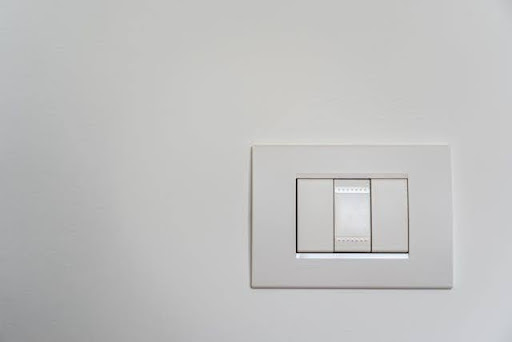Technology has transformed the way we interact with devices. From smartphones and tablets to kitchen appliances and modern lighting systems, touch-based controls have become the standard. At the heart of many of these innovations lies the capacitive touch switch—a simple yet powerful component that has redefined usability, design, and efficiency in modern electronics.
In this article, we’ll explore what a capacitive touch switch is, how it works, its advantages, applications, and why it has become so widely adopted.
What is a Capacitive Touch Switch?
A capacitive touch switch is an electronic switch that detects touch through the human body’s natural electrical properties. Unlike traditional mechanical switches that rely on physical pressure, capacitive switches respond to the electrical capacitance created when a conductive object (like a human finger) comes close to or touches the surface.
In simpler terms, capacitive switches sense the presence or absence of a finger, rather than a push or press. This allows for smooth, pressure-free interaction that feels modern and intuitive.
How Do Capacitive Touch Switches Work?
To understand how capacitive switches operate, it helps to look at their underlying principle—capacitance.
1. The Concept of Capacitance
Capacitance is the ability of a system to store electrical charge. When two conductive objects are separated by an insulator (dielectric), they form a capacitor. In capacitive switches, one plate of the capacitor is built into the switch, while the second “plate” is formed by the human finger.
2. Detection Mechanism
Here’s how the detection works step by step:
- The switch contains a conductive surface connected to a sensing circuit.
- When untouched, the switch maintains a baseline capacitance.
- When a finger approaches or touches the switch, it changes the capacitance value due to the body’s natural conductivity.
- The circuit detects this change and interprets it as a “touch,” triggering the desired action (turning on lights, activating a function, etc.).
3. No Moving Parts
Unlike mechanical switches, capacitive touch switches have no moving components. They rely solely on electrical changes, which is why they last longer and feel smoother during use.
Advantages of Capacitive Touch Switches
The popularity of capacitive touch technology isn’t accidental. It offers several advantages over traditional switches:
- Durability
- With no moving parts, capacitive switches are less prone to wear and tear.
- They often last significantly longer than mechanical switches.
- With no moving parts, capacitive switches are less prone to wear and tear.
- Aesthetic Design
- Capacitive switches can be integrated into sleek, flat surfaces such as glass, plastic, or even wood.
- This makes them ideal for modern, minimalist designs.
- Capacitive switches can be integrated into sleek, flat surfaces such as glass, plastic, or even wood.
- Ease of Cleaning
- Because there are no gaps or protruding buttons, cleaning capacitive switches is easy.
- This makes them especially suitable for kitchens, hospitals, and industrial environments.
- Because there are no gaps or protruding buttons, cleaning capacitive switches is easy.
- Versatility
- They can be programmed for multiple functions, such as dimming lights, controlling volume, or switching modes.
- They can be programmed for multiple functions, such as dimming lights, controlling volume, or switching modes.
- Enhanced User Experience
- Touch controls feel natural and intuitive.
- Multi-touch options can be implemented for advanced control.
- Touch controls feel natural and intuitive.
Common Applications of Capacitive Touch Switches
Capacitive touch switches are found in nearly every industry due to their adaptability and reliability.
Here are some of the most common applications:
1. Consumer Electronics
Smartphones, tablets, and laptops use capacitive technology for screens and control buttons. Power buttons, volume controls, and navigation systems often incorporate touch switches.
2. Home Automation
Modern homes are filled with capacitive switches for lighting systems, smart mirrors, and appliances like ovens and washing machines. Their sleek appearance blends seamlessly with interior design.
3. Automotive Industry
Cars increasingly rely on touch interfaces for infotainment systems, climate controls, and even dashboard panels. Capacitive switches offer durability and resistance to mechanical failure in high-use environments.
4. Medical Devices
Touch switches are used in hospital equipment, as they reduce the risk of dirt accumulation and are easier to sanitize.
5. Industrial Controls
Factories and industrial environments use capacitive switches on control panels because they withstand repeated use, moisture, and dust better than traditional buttons.
Capacitive vs. Mechanical Switches
It’s worth comparing capacitive switches with traditional mechanical switches to understand why the former are becoming more widespread.
| Feature | Capacitive Touch Switch | Mechanical Switch |
| Durability | High (no moving parts) | Moderate (wear over time) |
| Design | Sleek, modern | Bulky, visible |
| Maintenance | Easy to clean | Harder to clean (gaps collect dirt) |
| User Experience | Smooth, touch-based | Requires physical pressure |
| Cost | Higher initial cost | Lower initial cost |
While mechanical switches are still widely used due to their affordability and simplicity, capacitive switches are becoming the preferred choice for high-end and long-term applications.
Challenges of Capacitive Touch Switches
Despite their benefits, capacitive switches also have certain limitations:
- Cost: More expensive to manufacture than mechanical switches.
- Gloved Use: Some designs struggle to detect touches through gloves unless specifically engineered for it.
- Moisture Sensitivity: In environments with high humidity or water exposure, false triggers can sometimes occur.
- Power Consumption: Requires a small but continuous power supply, unlike purely mechanical alternatives.
However, ongoing improvements in design and materials are helping overcome these challenges, making capacitive switches more reliable and affordable.
The Future of Capacitive Touch Technology
As smart devices, IoT (Internet of Things), and automation continue to expand, capacitive switches will play an even bigger role. Expect to see:
- Integration with Voice and Gesture Control: Combining touch, voice, and motion detection for seamless user experiences.
- Transparent and Flexible Switches: New materials like conductive polymers and graphene will enable invisible or bendable touch panels.
- Expanded Industrial Applications: Ruggedized capacitive switches designed for outdoor, underwater, and high-dust environments.
- Personalized User Interfaces: Switches that adjust sensitivity based on user preferences and environmental conditions.
Conclusion
Capacitive touch switches represent a leap forward in how humans interact with technology. By replacing mechanical pressure with electrical detection, they offer durability, elegance, and versatility that mechanical switches simply cannot match.
From smartphones and smart homes to automotive dashboards and medical devices, their influence is undeniable. As the demand for cleaner designs, enhanced hygiene, and intuitive interfaces grows, capacitive touch switches are set to become the gold standard in switch technology.
For those wanting to learn about capacitive touch switch technology in more depth, exploring its applications across industries is an excellent starting point. With continuous innovations in materials and design, the future of capacitive touch systems is brighter than ever.









